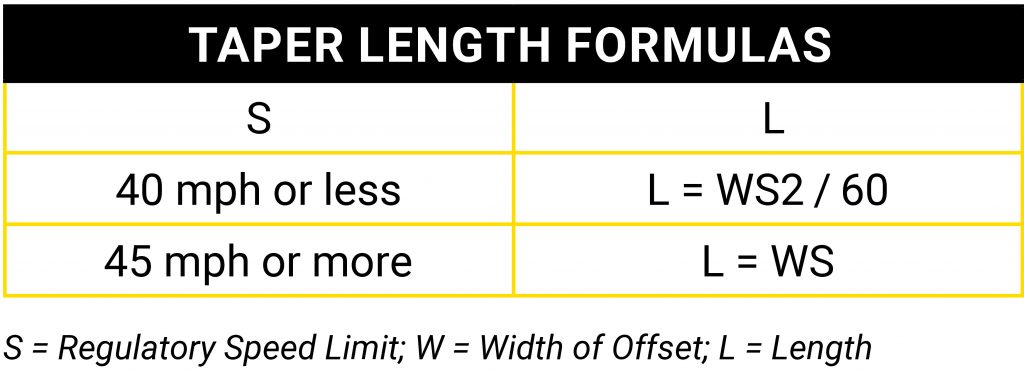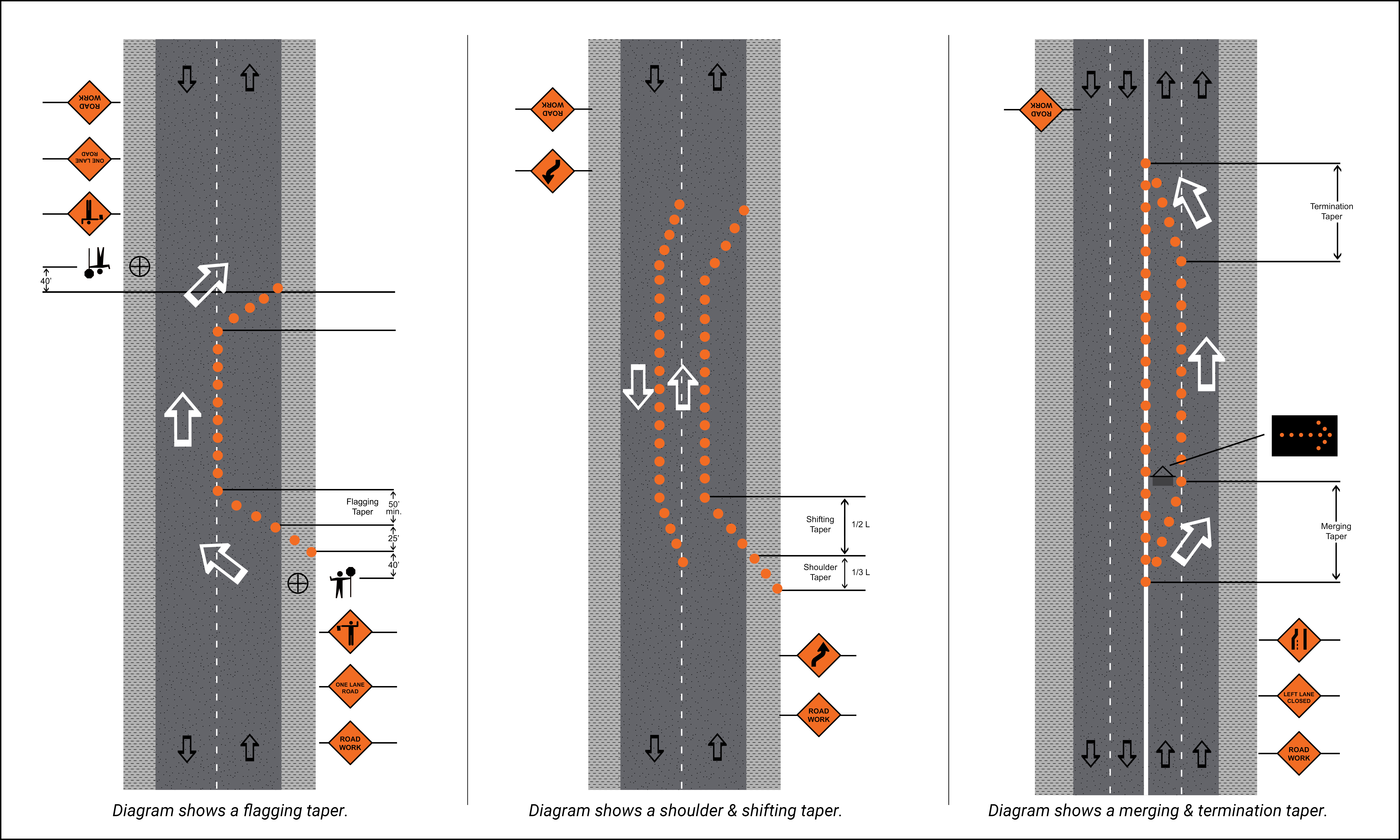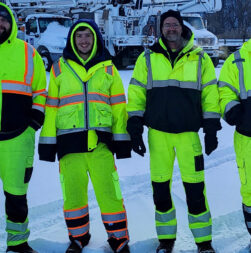TANTALIZING TAPERS
Driving along a roadway, you see signage signaling “Road Work Ahead.” You approach the work zone and seamlessly transition out of your lane of travel and into a new one to accommodate the work being performed. You may not realize it, but you’ve experienced the “taper.”
The taper is the transition area in a work zone. Tapers are the only locations in work zones where a driver must adjust their travel path, making proper placement critical to the safety of the job site. Tapers are also used to transition traffic back to its normal path of travel at the end of the construction area. Tapers that are too short, or worse, nonexistent, do not give drivers ample time or distance to adjust to the alteration in the roadway and safely changeover into the new lane.
The temporary traffic control zone generally has five sections: the advanced warning area, the transition area, the buffer area, the work area, and the termination area. Drivers receive warning about the upcoming operation, and then tapers, along with any necessary traffic control professionals, guide traffic through the work area. In a sense, tapers are like bookends.
The length of the taper depends on several factors, such as type of taper required, speed of the roadway, and road conditions, like cross streets, driveways, and business entrances.
GO THE DISTANCE
There are five types of tapers—see below for details. For a taper to work well, it should be the correct distance from start to finish. Unlike the state-standardized span of termination tapers, flagging tapers range from a minimum of 50 ft to a maximum of 100 ft based on state specific standards. Shoulder, shifting, and merging taper lengths are based on a mathematical formula (see below), where “L” equals length. Other variables in the formula are the road speed in miles per hour and the type of taper supporting traffic control.

A merging taper proudly holds the full measure of “L,” unlike its pals shoulder (L = 1/3 L) and shifting (L = 1/2 L). Because merging traffic is the most complex transition, it needs to provide drivers the longest distance to safely perform the lane shift. For example, a road with traveling speed of 55 mph requires that the merging taper must be 660 ft. The formula is consistent in all states, but some states have different minimum requirements. For example, Maryland requires any merging taper on a limited access roadway to be a minimum of 1000 ft. Always consult your stand and local standards before setting up tapers.
MEASURING THE “L”
Work zone personnel use handy tactics for measuring taper length. The “broken” lines painted on the roadway are called “skip lines.” The beginning of one skip line to the other totals 40 ft, since one skip line measures 10 ft in total and the gap between them measures 30 ft. So, all one needs to do is count the skip lines to gauge the distance. To measure against a solid center line or when dealing with hills, curves, and other impediments to visibility, use your stride or a rolling measure wheel. Be sure to measure your step stride to learn your average stride length before using it as a tactic for traffic control set up. If the pattern is too long to measure with your stride or a rolling measure wheel, then use your vehicle’s odometer. For reference, 0.1 of a mile equals 528 ft.
There are five types of tapers for five different changing traffic patterns.
- Flagging, or when one lane of two-way, two-lane traffic is closed,and flaggers are controlling the flow of traffic.
- Shoulder (L = 1/3 L), or when the shoulder is closed.
- Shifting (L = 1/2 L), or when traffic shifts laterally to accommodate a work zone, but the number of lanes open to traffic remains the same.
- Merging (L), or when a lane is closed and vehicles in that lane must merge with traffic in an adjacent lane.
- Termination, or the point where traffic flows back to the normal traffic path.

THAT’S A BEAUTIFUL TAPER
In Pennsylvania, the flagging taper is frequently used in short-term traffic control. Motorists, clients, supervisors, et al. should look for the following telltale signs when determining a good flagging taper setup:
- A flagger should be positioned 40 ft from the first cone in the pattern.
- 50 ft is the minimum length for a taper in a flagging operation.
- Tapers must utilize a minimum of six channelizing devices (e.g., orange cones), though more may be required based upon the regulatory speed limit and land width.
- More may be required based upon the regulatory speed limit and lane width
Ensuring the safety of motorists and work crews is our top priority. Following the guidelines for taper setup at a job site plays a key role in proper traffic management. Learn more about tapers by referencing the Manual for Uniform Traffic Control Devices or your state guide for temporary traffic control.



